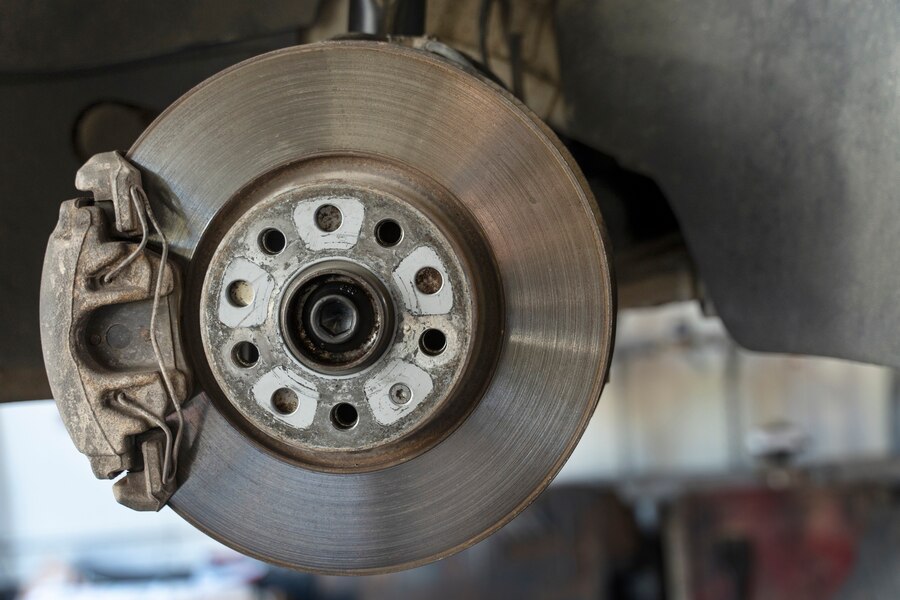While vehicle modifications have various implications, investing in quality auto brakes is about safety and durability, more than just improved performance.
Whether you’re the weekend warrior hitting the track or just want a little more stopping power for your daily driver, upgrading your brake system can bring so much value to your vehicle, much more than just functional basics.
Understanding Your Brake System
This means a short discussion of upgrades necessitates understanding how your braking system functions. The basics of your braking system comprise many parts: rotors, calipers, brake pads, brake lines, and brake fluid.
All of these play critical roles in stopping your car, and upgrading to durable automotive brakes makes a massive impact on better braking performance and greater durability.
High-Performance Brake Pads
Selecting the right brake pads is the basis of any brake upgrade. Performance brake pads come in many compounds designed for different conditions and requirements.
Semi-metallic pads are best suited for good heat dissipation and durability for high-performance applications. Ceramic pads provide consistent performance with less dust, making them ideal for daily drivers looking for an upgrade.
When selecting a brake pad, make sure to choose a set that reflects your driving style and usual driving conditions. This will ensure the right compromise between performance and longevity.
Brake Rotors: Power of Dissipation
Stock rotors can perform well under normal driving, but in terms of braking power and potential lifespan, high-performance rotors are the better upgrade.
Cross-drilled rotors: Holes drilled into the rotor surface help dissipate heat and clear water and debris. Slotted rotors feature grooves across the face, which keep the contact patch clean and prevent glazing.
For the ultimate in performance and durability, consider two-piece floating rotors, which allow for thermal expansion while maintaining structural integrity.
Brake Lines: The Hydraulic Highway
The brake lines are frequently overlooked. Changing to stainless steel braided brake lines offers significant advantages over rubber lines.
Braided reinforced lines prevent the expansion of the lines with pressure inside and provide a firmer pedal feel with consistently better braking.
They provide better protection from debris and weather degradation, making this a smart investment for any serious upgrade to the brake system.
Brake Fluid: The Lifeblood of Your System
One should not underestimate the significance of braking fluids. High-boiling-point performance brake fluids outperform DOT 3 fluid in terms of resistance to moisture absorption and offer reliable performance even in the most severe circumstances.
For track use or high-performance applications, DOT 4 or DOT 5.1 fluid is the preferred option due to its exceptional heat resistance and durability.
Big Brake Kits: The Ultimate Upgrade
For those looking for the ultimate braking, big brake kits are the most extensive upgrade available. These kits usually include larger rotors, multi-piston calipers, and all mounting hardware necessary for installation.
Greater rotor diameter gives better leverage on stopping power, while several pistons in the calipers allow for more even distribution of pad pressure. All these improve not only the stopping power but also the dissipation of heat and the longevity of the brake system.

Proper Installation and Break-In
Even the best components cannot perform well without quality installation and break-in techniques. Professional installation ensures every component is properly mounted and aligned.
The break-in process, often called bedding, creates an even layer transfer between the pads and rotors, which is paramount to optimal performance and longer lifespan.
It usually involves a series of controlled stoppages from certain speeds and a gradual warming-up process for the pads and rotors.
Maintenance for Long-Term Life
Once the brake system is upgraded, proper maintenance becomes even more important. Regular checks on pad wear, rotor condition, and fluid levels ensure consistent performance and maximum lifespan.
Pay attention to any changes in pedal feel, unusual noises, or vibrations. These could be signs of potential problems that should be addressed promptly.
Cost Factors
While brake upgrades are costly, they most often save money in the long term. Quality upgrades usually have longer lifespans than stock parts and offer stronger performance throughout their entire lifespan.
When planning upgrades, upgrade the system, not individual pieces, since matched components, as opposed to mixed, tend to run better together as a unit.
Final Thoughts
Overall, upgrading to a braking system has tremendous benefits, whether it is increased performance and longevity or a combination of both.
By carefully selecting good quality and ensuring proper installation and after-sales maintenance, you should be able to build brake systems that not only perform better but also last much longer than the stock equipment.
Remember, it is all about understanding precisely what you need for your intended application and matching components so that they complement each other as a complete system.
Whether you’re looking for improved track performance or just want more confident daily driving, upgrading your brake system with durability in mind will pay dividends in both safety and satisfaction.

